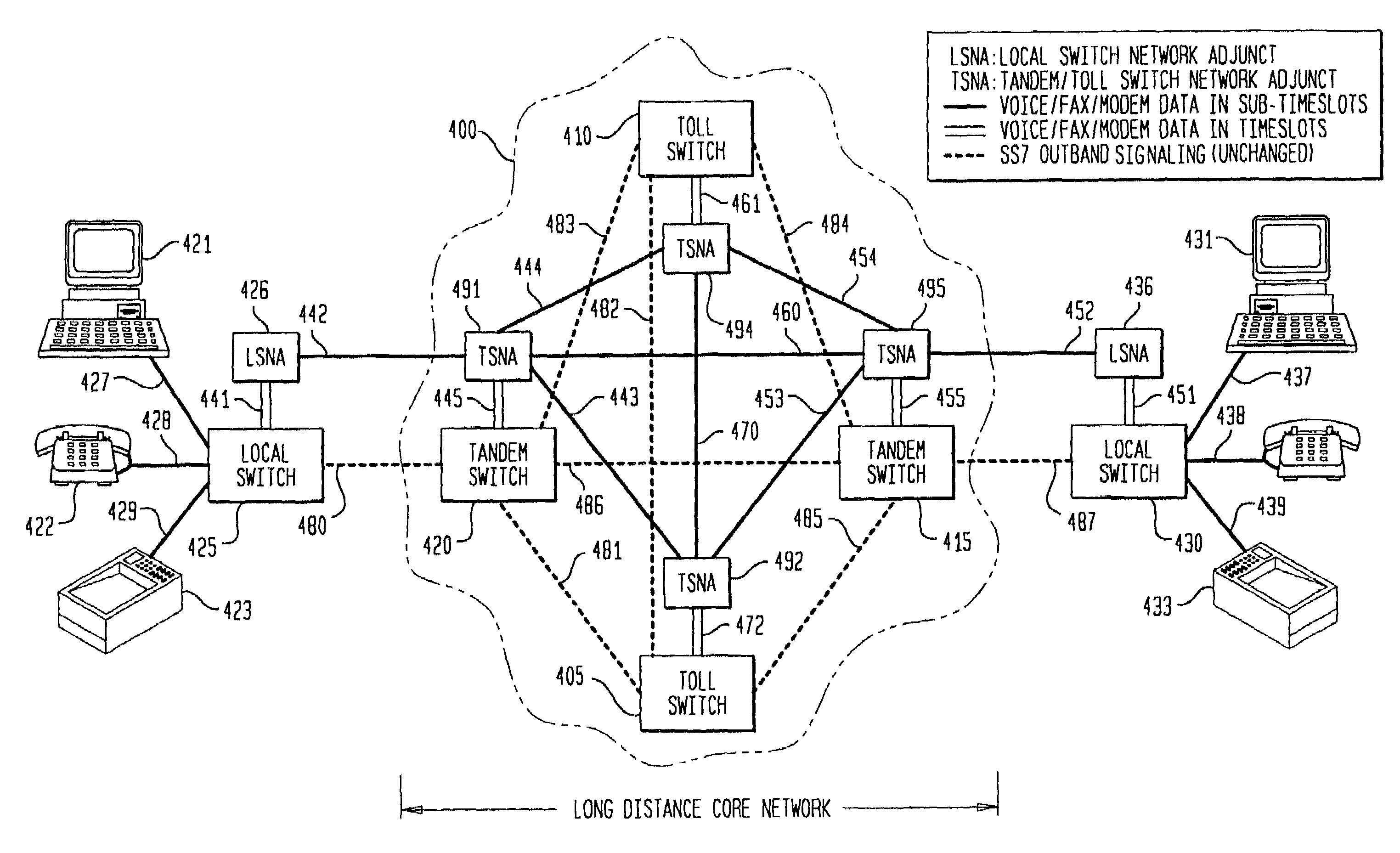Method and apparatus for network transmission capacity enhancement for the telephone circuit switched network
- Summary
- Abstract
- Description
- Claims
- Application Information
AI Technical Summary
Benefits of technology
Problems solved by technology
Method used
Image
Examples
Embodiment Construction
[0027]The present invention provides a novel view of the T1 and E1 frames, which includes the idea of a sub-timeslot and the bundling of sub-timeslots. Currently, the T1 frame is viewed as having twenty-four 64 Kbps channels or timeslots. Each of the twenty-four voice channels consists of 8 bit words in one T1 frame, obtained and transmitted at a sampling rate of eight thousand samples per second. Hence, the smallest unit of transmission is an 8 bit timeslot or channel, representing 64 Kbps of information. Throughout this document, the use of the term “T1 frame” refers to a T1 frame containing 24 timeslots or channels, each timeslot representing 8 bit words and each bit of which words represents a data throughput of 8 Kbps of data. Also, the use of the term regular E1 frame refers to a E1 frame containing 32 timeslots, each timeslot representing 8 bit code words and each bit of which representing 8 Kbps of data. The present invention is seeking to take this view farther and to redef...
PUM
 Login to View More
Login to View More Abstract
Description
Claims
Application Information
 Login to View More
Login to View More - R&D
- Intellectual Property
- Life Sciences
- Materials
- Tech Scout
- Unparalleled Data Quality
- Higher Quality Content
- 60% Fewer Hallucinations
Browse by: Latest US Patents, China's latest patents, Technical Efficacy Thesaurus, Application Domain, Technology Topic, Popular Technical Reports.
© 2025 PatSnap. All rights reserved.Legal|Privacy policy|Modern Slavery Act Transparency Statement|Sitemap|About US| Contact US: help@patsnap.com



